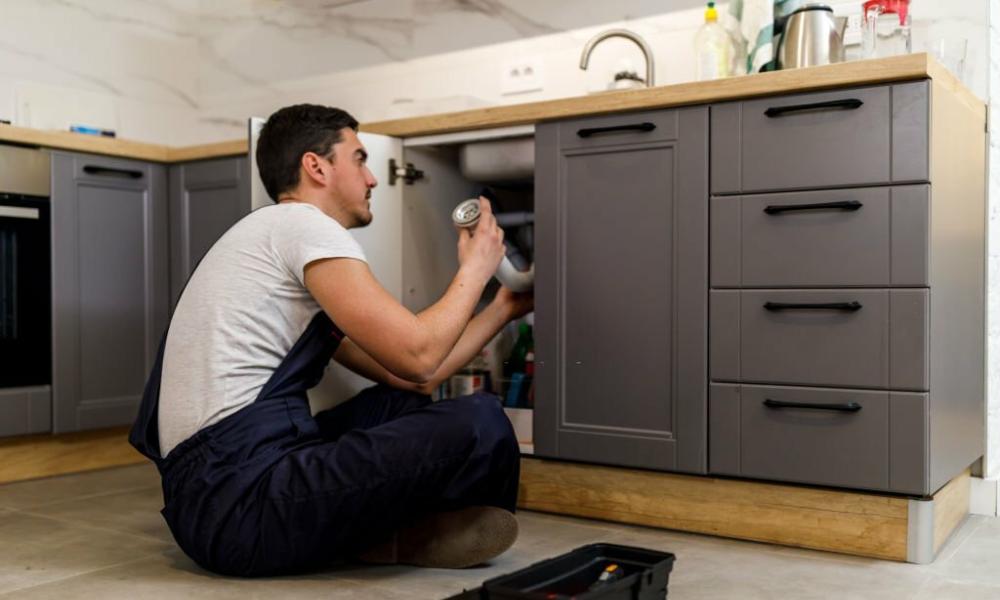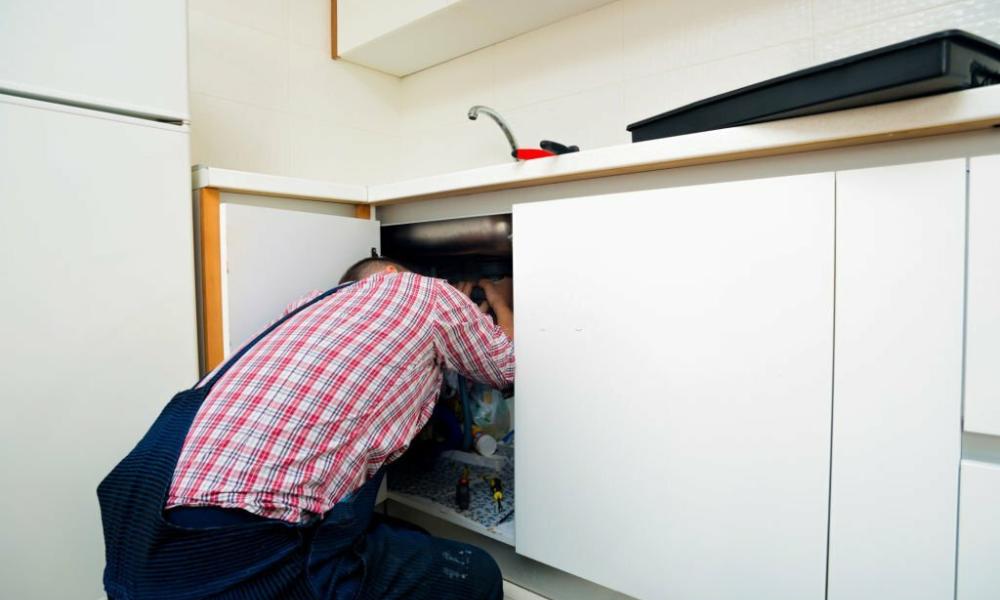To remove And Get rid of mold in a sink drain, Pour a mixture of equal parts white vinegar And warm water down The drain. Let it sit for an hour before flushing with hot water.
Mold in sink drains is a common household issue that can lead to unpleasant odors And potential health risks. Tackling this problem promptly ensures a cleaner, Safer home environment. White vinegar, A natural fungicide And deodorizer is often The go-to remedy for mold removal.
Its acidic nature breaks down mold spores effectively, Enhancing drain hygiene without harsh chemicals. Regular maintenance, Like this simple cleaning process, Not only prevents growth but also promotes better indoor air quality. Remember, Consistent care And early detection are key in preventing it from becoming a stubborn, Recurrent issue in your sink drain.
Sink Drain Mold Issue

Encountering black specks or patches around your sink drain is more than just an unsightly nuisance; it’s a sign of a mold issue that requires immediate attention. Often, These dark growths go unnoticed until They’ve spread, Leading to potential health risks And a compromised sink structure. In this guide, We’ll tackle effective strategies to eliminate your sink drain, Ensuring a cleaner And safer environment in your home.
Understanding The Problem
Grasping The full scope of a sink drain mold issue is key to targeting And resolving The problem effectively. Mold thrives in moist And dark environments, Which unfortunately describes The conditions in many sink drains. By understanding that your sink drain provides The perfect breeding ground for spores to settle And proliferate, You begin to see why proactive measures are essential.
Why Mold Grows In Sink Drains

- Moisture: Constant exposure to water can lead to residual moisture, A fundamental requirement for mold growth.
- Food Particles: Organic matter from soap, Food remnants, And other debris serves as a food source.
- Low Light: The dark recesses of sink drains are ideal for avoiding The sunlight that hampers mold growth.
- Poor Ventilation: Limited air flow creates stagnant conditions that facilitate expansion.
The Risks Of Leaving Mold Untreated
Neglecting mold in your sink drain isn’t just unsightly; it poses genuine health hazards And structural risks. People with allergies or respiratory issues can experience worsened symptoms due to exposure. Additionally, Persistence can lead to a degradation of sink materials And surrounding cabinetry, Culminating in costly repairs. Addressing this promptly is paramount to maintaining a healthy living space.
Identifying Mold In Your Drain

Encountering mold in your home is unpleasant, But when it’s lurking in The depths of your sink drain, it’s not just an aesthetic issue—it can also be a health concern. Understanding how to spot mold is The first step in maintaining a clean And safe household environment. Let’s delve into The signs that indicate The presence of mold within your drain.
Recognizing Mold Vs. Other Residues
It’s important to distinguish mold from other substances that might be causing discoloration or buildup in your drain. Whereas soap scum or mineral deposits often have a chalky texture And adhere to surfaces, Mold typically appears as a slimy or fuzzy growth, Usually characterized by its black, Green, Or brown hues. It carries a distinctive, Musty odor, Which is a strong indicator of its presence even before it becomes visible.
Common Signs Of Mold Presence
- Unusual odor: A persistent musty or earthy smell emanating from your sink is a telltale sign.
- Visible growth: Look out for patches of discoloration or spotty growth around The drain area.
- Slow drainage: If your sink is draining more slowly than usual, It could be due to obstructing water flow.
- Health symptoms: Unexplained allergies or respiratory issues among household members may be related to exposure.
When To Call A Professional

While some mold can be tackled with DIY methods, Certain situations necessitate professional intervention. Call a specialist if:
- The area of mold is extensive or spreading rapidly.
- DIY cleaning methods have proven ineffective.
- There is concern about mold’s impact on indoor air quality Or health.
- Your home has recently experienced water damage.
Professionals offer The expertise And equipment necessary to safely And thoroughly remove mold, Ensuring your home remains a clean And healthy environment.
Removing Mold Step By Step

Mold in your sink drain isn’t just unsightly; it can also lead to unpleasant odors And potential health risks. Tackling this issue requires a systematic approach to ensure The mold is thoroughly removed And future growth is prevented. Follow this step-by-step guide to eliminate your sink drain effectively And safely.
Safety First: Protective Gear And Ventilation
Before embarking on any mold removal task, It’s imperative to prioritize safety. It can irritate And harm your skin, Eyes, And respiratory system. To protect yourself, Follow These steps:
- Wear protective gloves to shield your hands from harsh cleaning agents And spores.
- Use a face mask, ideally an N-95 respirator, To prevent inhalation of spores.
- Don protective goggles to keep your eyes safe from splashes And mold particles.
- Ensure adequate ventilation by opening windows or using a fan to circulate fresh air.
Natural Cleaning Solutions Against Mold

Natural cleaning solutions can be just as effective as chemical ones when it comes to mold removal. Here are some eco-friendly alternatives you can use:
- White vinegar: Fill a spray bottle with undiluted white vinegar. Spray onto The moldy area, Let sit for an hour, Then rinse with hot water And scrub if necessary.
- Baking soda: Mix baking soda with water to create a paste. Apply to The mold, Scrub with an old toothbrush, Then rinse with hot water.
- Hydrogen peroxide: Spray 3% hydrogen peroxide on The mold, Wait for 10 minutes, Then scrub And rinse.
- Tea tree oil solution: Combine two teaspoons of tea tree oil with two cups of water in a spray bottle. Spray onto The mold, Don’t rinse.
These natural cleaners provide a safe And effective way to deal with issues without The need for harsh chemicals.
Commercial Products To Eradicate Sink Mold
If natural methods are not sufficient, There are potent commercial products specifically designed for mold removal:
| Product Type | Application | Precautions |
| Chlorine Bleach | Direct application or diluted in water | Use in a well-ventilated area; avoid contact with skin And eyes |
| Mold And Mildew Removers | Spray onto The affected area, Let sit, Then scrub | Always follow The manufacturer’s instructions; ensure good ventilation |
| Anti-Mold Sprays | Apply as directed on The product label | Consider using a face mask And gloves during use |
Choose a product appropriate for The severity of your mold situation And carefully follow The instructions provided, Keeping safety in mind at all times. With The proper method, Products, And precautions, Your sink drain can be free And fresh once again.
Preventive Measures For Sink Drains

Mold in your sink drain isn’t just a nuisance, It’s a health hazard that can spread unpleasant odors And potentially cause allergic reactions. By taking a proactive approach, You can prevent it from taking hold in your sink drains. Here are some effective strategies to keep those drains sparkling clean And mold-free.
Routine Cleaning Recommendations
Regular maintenance is key to preventing mold growth in your sink drains. Weekly hot water And soap cleaning can keep organic materials from building up. For a deeper clean, Consider These steps:
- Boil a kettle of water And pour it down The drain to loosen any buildup.
- Mix baking soda with vinegar for a natural cleaning solution, And pour it down The drain. Wait for about 15 minutes.
- Rinse The drain with another pot of boiling water to clear out The mixture And any loosened debris.
Natural Preventive Solutions

Using eco-friendly materials can be just as effective as chemicals for preventing mold. Try These natural solutions to keep mold at bay:
- White vinegar: It’s a natural disinfectant that you can apply directly to your sink drain.
- Baking soda: A weekly sprinkle down The drain absorbs moisture And odors.
- Essential oils: Tea tree And peppermint have antifungal properties And leave a fresh scent.
Habits To Minimize Mold Growth
Adopt These regular habits to reduce The conditions that favor mold growth:
- Keep The area around The sink dry. Wipe down The sink And faucet after each use to minimize lingering moisture.
- Avoid leaving organic matter in The sink. Scrap food scraps into The trash or compost before washing dishes.
- Use a drain cover to catch hair And Debris, And clean it out regularly.
- Run The garbage disposal frequently with cold water to clear out food particles.
Maintenance Tips: No More Mold

Battling mold in your sink drain can feel like an endless war. Yet, With proper maintenance And smart practices, You can achieve a pristine, Free sink. Thrives in moist environments, But by adopting routine inspections And cleaning habits, You’re setting up strong defenses against this unwelcome invader. Let’s embark on a mission to keep your drain mold-free, So your sink remains spotless And healthy.
Regular Drain Inspection Practices
Consistency is key in preventing mold growth. Regular inspections should be an integral part of your sink maintenance regimen. Here are steps to ensure you stay ahead of The mold:
- Weekly Checks: Examine your sink drain every week for any early signs of mold. Look for black or green specks around And inside The drain.
- Use Safe Cleaners: Opt for natural cleaners like a mixture of baking soda And vinegar, Which safely remove potential food sources without harsh chemicals.
- Flush with Hot Water: At least once a week, Flush your sink with boiling water to dismantle any developing spores.
Long-term Solutions To Keep Drains Clear

To achieve a long-term mold-free environment, Consider These solutions that target The root causes of in-sink drains:
- Ensure Good Ventilation: An airy bathroom reduces moisture build-up that fosters mold. Keep The air moving with an exhaust fan or frequent airing out.
- Water Flow Improvement: Fix any slow-draining sinks to prevent standing water where mold can grow.
- Organic Matter Control: Avoid letting food particles Or other organic matter go down The drain as They are prime feed.
When To Replace Parts Of The Sink Drain
Sometimes cleaning isn’t enough, And replacing parts becomes necessary. Be vigilant for These signs that indicate it’s time for fresh components:
| Signs of Wear | Action Required |
| Visible Rust or Corrosion | Replace The affected metal parts promptly to prevent further deterioration. |
| Persistent Foul Odor | If cleaning doesn’t eliminate The smell, Consider replacing The p-trap Or other drain parts. |
| Cracks or Damage | Any visible damage can harbor mold And should be replaced to maintain a seal against moisture. |
Frequently Asked Questions
Can Bleach Clear Mold In Sink Drains?
Bleach can effectively eliminate mold in sink drains by removing visible growth And disinfecting The area, But it may not reach all The spores.
What Natural Remedies Remove Sink Drain Mold?
Baking soda And vinegar can naturally clean mold in drains by creating a fizzy chemical reaction that loosens mold And grime.
How Often Should I Clean My Sink Drain To Prevent Mold?
Regular cleaning every two weeks with a mold-inhibiting solution can help prevent buildup in sink drains.
Conclusion
Battling mold in your sink drain need not be a daunting task. With routine maintenance And The right tools, A clean, mold-free sink is achievable. Remember, Consistent action is key to preventing buildup. So, Roll up your sleeves, Apply These tips, And enjoy a fresher, Healthier home space.




